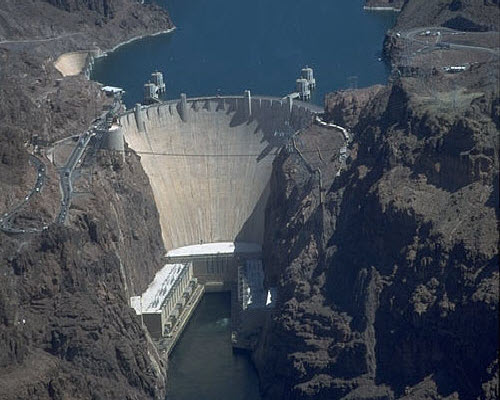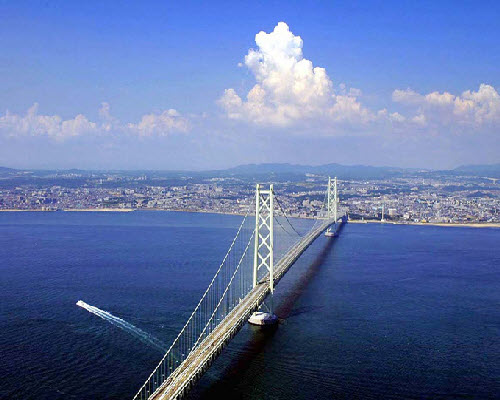“Could it be magic?” sang British Pop Group Take That in the mid 1990s, presumably after seeing a woman being sawed in half by a man in a sparkly tuxedo. The answer is no, it probably wasn’t magic. Most magic isn’t anything supernatural at all – it may be sleight of hand, smoke-and-mirrors trickery or just impressively high pain thresholds but it’s not real magic. But why would you let common sense spoil a good show? Magic as entertainment has been around since ancient times, encompassing a wide variety of acts, and modern magicians have to work harder than ever to wow cynical audiences. So, which acts leave a lasting impression? Find out in our Top 10 Most Impressive Magic Acts.
10. David Blaine

Nowadays, David Blaine seems to be more interested in suicide missions than in performing the kind of street magic that made his name. He’s lived in a water tank for a week, hung upside down over Wollman Rink in Central Park and electrocuted himself for 72 hours. The very fact that he lives on despite these stunts is a kind of magic in itself, but it was the simple tricks he performed on the street that really gave him the edge over other magicians. Forget attention-seeking razzle-dazzle and millionaire sponsored stunts, the act of flipping a card through a shop window left passers-by speechless. Get back to what you’re good at, David!
9. Harry Blackstone, Sr

If you were wondering where the cliches of magic came from, you need to look to the pioneering magicians of the 1920s and 30s, who first performed tricks like sawing a woman in half. One of these early magicians was Harry Blackstone, Sr, who performed mainly silently, to the accompaniment of an orchestra. His signature tricks included the “Dancing Handkerchief”, the “Floating Lightbulb” and the “Vanishing Birdcage”. The latter involved disappearing a canary and is said to have delighted the children in the audience, although if 2006 film “The Prestige” is to be believed, it mainly resulted in a lot of dead canaries. Birdicide aside, Harry Blackstone Sr was a highly influential and revered magician, whose legacy was passed on to his son Harry Blackstone Jr.
8. Siegfried and Roy

Magic acts occupy a long spectrum, from the overblown theatrical illusions to pared-down street magic. Siegfried and Roy sit firmly on one end of that spectrum. Their act included glittery costumes, dramatic music and famously, live white tigers. Siegfried Fischbacher and Roy Horn met in 1959 while working on a cruise ship, and the fortuitous presence of a cheetah on board (smuggled on by Roy) inspired them to combine wild animals and Siegfried’s magic in an unprecedented display of zoological razzle-dazzle. Eventually, the act was given a residency at The Mirage Resort and Casino in Las Vegas, and they were the most popular show in Vegas for the 13 years they performed there.
Sadly, in 2003 Roy was bitten by one of their tigers – Montecore – which effectively ended their careers. Although the act was not aggressive, it was a huge risk for the hotel and they closed the show. Siegfried and Roy – and Montecore – reunited for a farewell show in 2009 but are unlikely to perform again.
7. Derren Brown

A world away from the glitz of Siegfried & Roy, Derren Brown is a softly-spoken, intense illusionist from the UK who has a series of macabre and impressive feats to his name. He has predicted the results of the lottery, conducted a nationwide seance and convinced someone into assassinating comedian Stephen Fry. His brand of magic is certainly dark and he describes himself as a “mentalist” i.e someone who is more concerned with influencing others’ thoughts than doing visual tricks. The results are equally astonishing, but give you the uneasy impression that someone is trying to get into the edge of your mind…
6. David Devant

The first President of the Magic Circle was both modest and self-assured – when young magicians boasted about how many tricks they knew, he replied that he knew only a few dozen, but he was able to perform them very well. His magic was, at the time, criticized for being too showy and lacking mystique, but his witty stage act paved the way for magician-entertainers for years to come. His repertoire included “Magic Kettle” where he produced, on demand, any type of alcohol the audience asked for. He was also influential in early cinema, being one of the first to purchase a theatrograph, showing it first in London in 1896. His legacy is clear in the world of magic, but also in the world of music where the indie band David Devant and his Spirit Wife bear his name.
5. Doug Henning

According to a recent biography, the Canadian magician led a “wonder-filled life”. He was certainly influential and successful, winning the Georgie Award in 1977. His tricks include disappearing an elephant, turning himself into a shark and combining a black horse and a white horse to make a zebra. He also took on the legend of Houdini by performing the water torture illusion for the first time since Houdini himself. He retired in the mid 80s and became very involved in Transcendental Meditation. Friends believe this led to his eventual death, as he refused all treatment for liver cancer and relied on a diet of nuts and berries, as prescribed by his Yogi. A sad loss to the magic world.
4. Jean Robert-Houdin
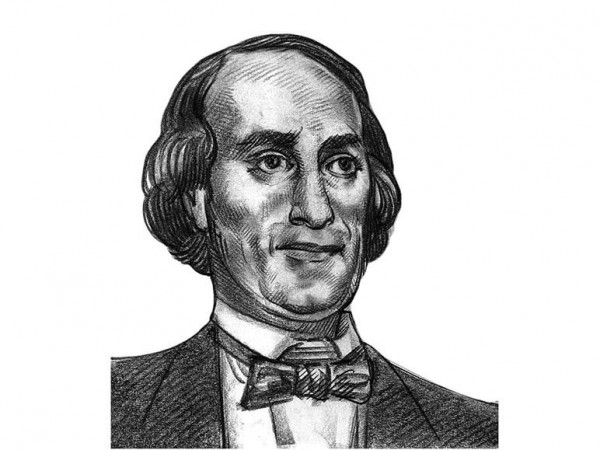
A forerunner to so many of the magicians on the list, Jean Robert-Houdin performed in theatres in the 1840s and 50s and was one of the first magicians to do so. Before Houdin, they were limited to street corners and marketplaces but Houdin turned magic into an artform. He was the first person to use electromagnetism in a trick, specifically the “Light and Heavy Chest” trick, where audience members were asked to lift a small wooden box, which he said contained his savings. Then he commanded the box to stick to the table and it did. His audiences – who didn’t yet understand electromagnets – were astounded. As news of electromagnets spread, he changed the act in order to keep them intrigued. A master showman and brilliant when it came to turning science into magic.
3. David Copperfield
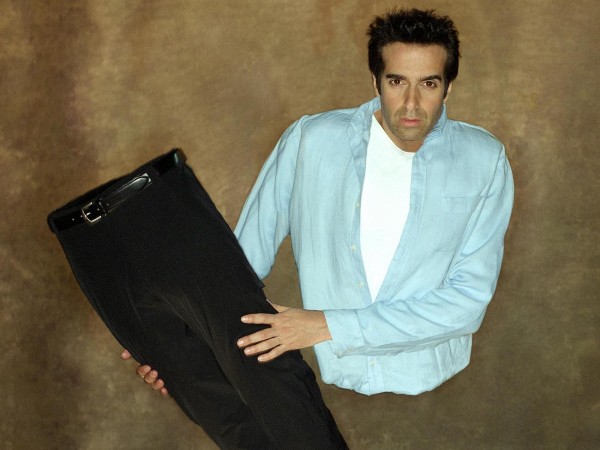
One of the most famous magicians in the world, David Copperfield is incredibly commercially successful, grossing over $3bn so far. His trademark style is theatrical, romantic and incredibly corny, but his illusions are impressive. He has 21 Emmys, 11 Guinness World Record and the title of “Magician of the Century” from the Society of American Magicians – not a bad record for someone who once performed as “Davino the Boy Magician”.
His most famous illusions include his flying trick, which appeared on a TV special but has often been repeated on live shows. Part of the trick involved him passing through hoops to prove he’s not on a wire, but he is actually suspended by a complex system of very fine wires, as explained by John Gaughan. He might not be the coolest, but there’s no denying that David Copperfield knows how to impress his audience.
2. Penn and Teller

An eccentric pairing of outspoken Penn and silent Teller, this duo have wowed audiences since 1975. Teller often seems to be the victim of the tricks – being dangled over a fire, having a nail gun fired at his crotch – but accepts it all with quiet resignation. The pair says they aren’t close friends off-stage, which may be a sensible precaution against work-life boundaries blurring. Or it could be because Penn keeps trying to set fire to Teller. It’s hard to say.
Their act is shocking, fast-paced and unpredictable and they have their own twists on the classics. One example is the bullet-catch trick, where they fire guns at each other and catch the bullets in their mouths. They are keen to perform responsibly and at the end of their nail gun trick, Penn often tells the audience that it’s just a trick and they don’t believe in doing dangerous things on stage. Despite that, watching a Penn and Teller show always feels edgy. A quirky and modern act for a modern audience.
1. Harry Houdini
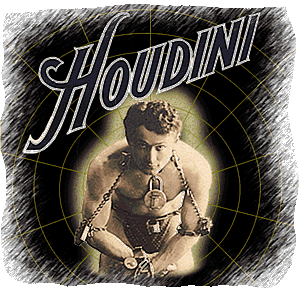
Despite calling himself an escapologist rather than a magician, Houdini is known as the greatest magician ever. And with good reason. His water torture illusion was imitated – by Doug Henning – but never bettered and his “Vanishing Elephant” was the biggest illusion ever performed. It’s not surprising he’s known as the Great Houdini – his influence can be seen in so many magicians to have followed him. As well as magic, he also made movies that he both wrote and starred in. On top of that, he was an early aviation enthusiast and was the first person to ever fly a plane over Australian soil. A fittingly full record for the man revered by every escapologist and magician since.






